ADVANTECH PCM-6135L
Specifications
Form Factor
PC/104
BIOS
AMI 128 KB Flash memory
Chipset
C&T 65545
CPU with core logic
ALi M6117, 40 MHz 80386SX CPU
Dimensions
7.3" (L) x 4.8" (W) (185 mm x 122 mm)
Display memory
1 MB DRAM
Enhanced IDE hard disk drive interface
Supports up to two Enhanced IDE devices. BIOS auto-detect
Floppy disk drive interface
Supports up to two FDDs: 3.5" (720KB or 1.44MB) and/or 5.25" (360KB or 1.2MB)
Hardware Windows acceleration
16-bit graphics engine. Hardware line drawing and 64 x 64 x 2 hardware cursor.
Max. power requirements
+5 V @ 1.5 A (typical)
Multimode parallel port
Configured to LPT1, LPT2, LPT3 or disabled. Supports SPP/EPP/ECP; D-SUB 25-pin connector on board
Operating temperature
32° F to 140° F (0° C to 60° C)
Power supply voltage
+5 V (4.75 V to 5.25 V)
PS/2 keyboard connector
Mini-DIN keyboard connector
RAM
Two 72-pin SIMM socket. Supports standard page mode/EDO DRAM from 1 to 32 MB (accepts 1, 4, 16 MB modules)
Resolution
Panel resolution up to 640 x 480 @ 16 M colors. Non-interlaced CRT resolutions up to 1024 x 786 @ 256 colors.
Serial ports
One serial RS-232 port, one serial RS-232/422/485 port. Two 16C550 compatible UARTs
SSD
3 sockets for a 360 KB/1.44 MB Flash/RAM/ROM disk and 1 socket for DiskOnChip 2000 Flash disk
Weight
0.2 kg
Features
- AMI BIOS for enhanced system performance
- Built-in 100% PC/AT compatible 80386SX CPU with core logic
- Built-in enhanced IDE hard disk drive interface
- Compact size (185 mm x 122 mm).
- ISA-bus expansion with on-board PC/104 modules
- ISA-bus SVGA/LCD display controller (LCD, EL and CRT displays) plus on-board DB-15 connector (PCA-6135 only)
- Lithium battery backup for real-time clock/calendar
- On-board PS/2 keyboard connector
- One multimode parallel port supporting SPP/ECP/EPP
- PC/104 connection supports face-up installation
- Single voltage power requirement (+5 V @ 2.0 A)
- Two serial ports: one RS-232 and one RS-232/422/485; on-board DB-9 connector is designated as COM1
- Up to 32 MB DRAM
- Watchdog timer, interval 1~63 seconds
Datasheet
Extracted Text
PCA-6135/PCA-6135L
Half-size 386-chip All-in-one
CPU Card with
VGA CRT/LCD, SSD
Copyright Notice
This document is copyrighted, 1998. All rights are reserved. The
original manufacturer reserves the right to make improvements to
the products described in this manual at any time without notice.
No part of this manual may be reproduced, copied, translated or
transmitted in any form or by any means without the prior written
permission of the original manufacturer. Information provided in
this manual is intended to be accurate and reliable. However, the
original manufacturer assumes no responsibility for its use, nor for
any infringements upon the rights of third parties which may result
from its use.
Acknowledgments
IBM, PC/AT, PS/2 and VGA are trademarks of International
Business Machines Corporation.
Microsoft Windows is a registered trademark of Microsoft Corp.
SMC is a trademark of Standard Microsystems Corporation.
C&T is a trademark of Chips and Technologies, Inc.
UMC is a trademark of United Microelectronics Corporation.
AMI is a trademark of American Megatrends, Inc.
ALI is a trademark of Acer Laboratories, Inc.
All other product names or trademarks are properties of their
respective owners.
Part No. 2006613503 4th Edition
Printed in Taiwan October, 1998
Packing list
Before you begin installing your card, please make sure that the
following materials have been shipped:
• 1 PCA-6135/PCA-6135L All-in-One Single Board Computer
• 1 utility disk with system BIOS, VGA BIOS utility programs
(VGA BIOS PCA-6135 only)
• 1 utility disk with SVGA utility programs and drivers for
Windows 3.1 (PCA-6135 only)
• 1 3.5" IDE flat cable
• 1 keyboard cable
• 1 flat cable 30 cm 1S/1P adapter
• 1 FDD cable
If any of these items are missing or damaged, contact your
distributor or sales representative immediately.
Contents
Chapter 1: General Information ................................ 1
Introduction ............................................................................ 2
Features................................................................................... 3
Specifications .......................................................................... 4
Standard SBC functions ....................................................... 4
SVGA/Flat panel interface (PCA-6135 only) ...................... 5
Mechanical and environmental ............................................ 5
Board layout and dimensions................................................ 6
Chapter 2: Introduction.............................................. 7
Jumpers and connectors ........................................................ 8
Locating jumpers ................................................................. 10
Locating connectors ............................................................. 11
Setting jumpers .................................................................... 12
Safety precautions ................................................................ 13
CMOS clear (J14) .............................................................. 13
SSD I/O address select (J6, J7) .......................................... 13
Watchdog timer (J15)......................................................... 14
Battery select (J9)............................................................... 14
LCD type control (J1) ........................................................ 14
COM2 settings for RS-232/422/485 (J4) ........................... 14
Installing DRAM (SIMMs) ................................................. 15
Installing 60 ns SIMMs ...................................................... 15
IDE hard drive connector (CN1) ........................................ 16
Connecting the hard drive .................................................. 16
Floppy drive connector (CN2) ............................................ 17
Connecting the floppy drive ............................................... 17
Parallel port connector (CN3) ............................................ 18
Parallel port IRQ/IO address/DMA/
Printer port mode select ..................................................... 18
Keyboard connector (CN12) ............................................... 18
Power connector (CN5) ....................................................... 19
Main power connector, +5V, +12V (CN5) ........................ 19
Serial ports (CN10, CN8, CN7) ........................................... 19
COM1 RS-232 port (CN10) ............................................... 19
COM2 RS-232/422/485 connection (CN7, CN8) .............. 21
VGA interface connections (PCA-6135 only) .................... 22
CRT display connector (CN6) ........................................... 22
Flat panel display connector (CN4) ................................... 22
Reset Switch (J13) ................................................................ 23
Hard disk drive LED (J12) ................................................. 23
VGA display connector (CN6) (PCA-135 only) ................ 23
External Speaker (J10) ........................................................ 23
Chapter 3: Software Configuration
(PCA-6135 only)................................... 25
Introduction .......................................................................... 26
Utility disk ............................................................................ 26
VGA display software configuration.................................. 27
Preparing your own VGA/LCD BIOS ............................... 28
Connections for four standard LCDs................................. 29
Connections to Sharp LM64183P
(640 x 480 DSTN MONO LCD)........................................ 29
Connections to PLANAR EL
(640 x 480 AD4 EL)........................................................... 30
Connections to Toshiba LTM10C042
(640 x 480 TFT Color LCD) .............................................. 31
Connections to Sharp LM64C142
(640 x 480 DSTN Color LCD) ........................................... 32
Chapter 4: AMI FlaChapter 3sh BIOS Setup .......... 33
System test and initialization .............................................. 34
System configuration verification ...................................... 34
AMI BIOS setup................................................................... 35
Entering setup..................................................................... 35
Standard CMOS setup ........................................................ 36
Advanced CMOS setup ...................................................... 37
Advanced Chipset setup ..................................................... 38
Power Management Setup ................................................. 39
Change Supervisor Password ............................................. 41
Auto Configuration with Optimal settings
Auto Configuration with Fail Safe settings........................ 42
Save settings & exit............................................................ 43
Exit without saving ............................................................ 43
Chapter 5: SVGA Setup
(PCA-6135 only)................................... 45
Simultaneous display mode ................................................. 46
Sleep mode ............................................................................ 46
Software support .................................................................. 47
Driver installation ................................................................ 48
Windows setup ................................................................... 49
AutoCAD R12 .................................................................... 52
Lotus 1-2-3 and Lotus Symphony ...................................... 54
VESA ................................................................................. 56
Word ................................................................................... 57
WordPerfect ....................................................................... 58
Appendix A: Flash/RAM/ROM Solid State Disk ..... 61
Memory devices.................................................................... 62
Drive capacity ....................................................................... 63
Drive configuration .............................................................. 63
Drive Selection...................................................................... 65
Solid State Disk (SSD) Formatting: ................................... 66
Formatting the Solid State disk .......................................... 66
Booting from the Flash/RAM/ROM disk .......................... 67
Inserting memory devices ................................................... 67
SSD Jumper Setting ............................................................. 68
SSD Device Select [ J2 (U9), J3 (U14), J5 (U18)] ............ 68
SSD I/O address select (J6, J7) .......................................... 68
SRAM Battery Source (J9) ................................................. 68
File copy utility ..................................................................... 69
Using a memory manager (EMM386.EXE) ...................... 69
DiskOnChip®-2000 quick installation guide .................... 70
Appendix B: Programming the
Watchdog Timer .................................. 71
Programming the watchdog timer ..................................... 72
Data Values ........................................................................ 72
Appendix C: Installing PC/104 Modules ................. 73
Installing PC/104 modules................................................... 74
PCA-6135 ........................................................................... 75
Appendix D: Pin Assignments ................................ 77
CRT display connector (CN6) ........................................... 78
Flat panel display connector (CN4) ................................... 78
RS-232 connections ........................................................... 79
RS-422/485 connections .................................................... 80
External keyboard connector (CN13) ................................ 81
Keyboard connector (CN12) .............................................. 81
Power connector (CN5)...................................................... 81
HDD connector (CN1) ....................................................... 82
PC/104 connectors (CN9, CN11) ....................................... 83
Floppy drive connector (CN2) ........................................... 84
Parallel port connector (CN3) ............................................ 85
1st MB Memory Map .......................................................... 86
Interrupt Assignment .......................................................... 86
1
General
Information
This chapter gives background informa-
tion on the PCA-6135/L.
Sections include:
• Card specifications
• Card layout and dimensions
CHAPTER
Introduction
The PCA-6135/L is the ultimate cost-effective solution for limited
space applications. It offers all the functions of an AT-compatible
industrial computer on a single board.
The PCA-6135/L is especially designed as an ultra-compact all-in-
one SBC which incorporates a PC/104 connector into its design,
accommodating easy expansion to meet your application needs.
The board uses a newly-developed 386SX Embedded Microcon-
troller. This highly integrated, low-voltage single-chip combines
Intel's 386SX compatible microprocessor and ALi's M1217C
chipset. All the features required of a PC compatible embedded
controller are included in the PCA-6135/L.
The PCA-6135L is equipped with a 72-pin DRAM SIMM socket,
enhanced IDE, multimode parallel port, I/O, FDD interface,
keyboard connector and two standard serial ports. The PCA-6135
is equipped with all of the above, and, additionally, an SVGA/
LCD interface.
Offering superior configuration flexibility, the PCA-6135/L has a
compact size. Its built-in CPU, highly compact size and numerous
features make it an ideal cost/performance solution for all kinds of
embedded applications.
For the latest product information and updates please see
Advantech's website at http://www.advantech.com.
Technical support is available at http://support.advantech.com
2 PCA-6135/L User's Manual
Features
• Compact size (185 mm x 122 mm).
• ISA-bus expansion with on-board PC/104 modules
• Built-in 100% PC/AT compatible 80386SX CPU with core logic
• ISA-bus SVGA/LCD display controller (LCD, EL and CRT displays)
plus on-board DB-15 connector (PCA-6135 only)
• AMI BIOS for enhanced system performance
• Up to 32 MB DRAM
• Built-in enhanced IDE hard disk drive interface
• PC/104 connection supports face-up installation
• One multimode parallel port supporting SPP/ECP/EPP
• Watchdog timer, interval 1~63 seconds
• Lithium battery backup for real-time clock/calendar
• Two serial ports: one RS-232 and one RS-232/422/485; on-board DB-9
connector is designated as COM1
• On-board PS/2 keyboard connector
• Single voltage power requirement (+5 V @ 2.0 A)
Chapter 1 General Information 3
Specifications
Standard SBC functions
• CPU with core logic: ALi M6117, 40 MHz 80386SX CPU
• BIOS: AMI 128 KB Flash memory
• RAM: Two 72-pin SIMM socket. Supports standard page mode/
EDO DRAM from 1 to 32 MB (accepts 1, 4, 16 MB modules)
• Enhanced IDE hard disk drive interface: Supports up to two
Enhanced IDE devices. BIOS auto-detect
• Multimode parallel port: Configured to LPT1, LPT2, LPT3 or
disabled. Supports SPP/EPP/ECP; D-SUB 25-pin connector on
board
• Floppy disk drive interface: Supports up to two FDDs: 3.5"
(720KB or 1.44MB) and/or 5.25" (360KB or 1.2MB)
• Serial ports: One serial RS-232 port, one serial RS-232/422/485
port. Two 16C550 compatible UARTs
• PS/2 keyboard connector: Mini-DIN keyboard connector
• SSD: 3 sockets for a 360 KB/1.44 MB Flash/RAM/ROM disk
and 1 socket for DiskOnChip 2000 Flash disk
4 PCA-6135/L User's Manual
SVGA/Flat panel interface (PCA-6135 only)
• Chipset: C&T 65545
• Display memory: 1 MB DRAM
• Hardware Windows acceleration: 16-bit graphics engine.
Hardware line drawing and 64 x 64 x 2 hardware cursor.
• Resolution: Panel resolution up to 640 x 480 @ 16 M colors.
Non-interlaced CRT resolutions up to 1024 x 786 @ 256 colors.
Mechanical and environmental
• Dimensions: 7.3" (L) x 4.8" (W) (185 mm x 122 mm)
• Power supply voltage: +5 V (4.75 V to 5.25 V)
• Max. power requirements: +5 V @ 1.5 A (typical)
° ° ° °
• Operating temperature: 32 F to 140 F (0 C to 60 C)
• Weight: 0.2 kg
Chapter 1 General Information 5
Board layout and dimensions
PCA-6135/L dimensions
6 PCA-6135/L User's Manual
2
Installation
This chapter tells how to set up the PCA-6135/L
hardware, including instructions on setting
jumpers and connecting peripherals, switches
and indicators. Be sure to read all the safety
precautions before you begin the installation
procedure.
CHAPTER
Jumpers and connectors
Connectors on the board link it to external devices such as hard
disk drives, a keyboard, or floppy drives. In addition, the board
has a number of jumpers that allow you to configure your system
to suit your application.
The table below lists the function of each of the board jumpers and
connectors:
Jumpers
Label Function Note
J1 LCD/EL select 1-2: LCD
2-3: EL
J2, J3, J5 SSD battery backup select J2 J3 J5
SRAM close close close
Flash/EPROM open open open
J4 COM2 RS-232/422/485 select 1-2: RS-232
3-4: RS-422
5-6: RS-485
J6, J7 SSD I/O address select J6 J7 SSD
close close disable
open close 210H
close open 220H
open open 230H
J8 Keyboard lock CON
J9 Battery select 2-3: Internal battery
1-4: External battery
J10 Speaker connector
J12 HDD LED connector
J13 RESET connector
J14 CMOS clear 2-3: Clear CMOS
J15 Watchdog select 1-2: IRQ15
2-3: Reset
8 PCA-6135/L User's Manual
Connectors
Label Function
CN1 IDE hard drive connector
CN2 Floppy drive connector
C N 3 Parallel port connector
CN4 LCD connector
CN5 Power connector
CN6 VGA connector (PCA-6135 only)
CN7 COM2 (RS-422/485)
CN8 COM2 (RS-232)
CN9/CN11 PC/104
CN10 COM1
CN12 PS/2 keyboard connector
CN13 External Keyboard Connector
U9, U14, U18 SSD memory socket
Chapter 2 Installation 9
Locating jumpers
J1
J2 J3 J5 J4
J7 J6
Legend:
J12 J14 J9 J8
J1 LCD/EL select
J2, J3, J5 SSD battery backup select
J4 COM2 RS-232/422/485 select
J6, J7 SSD I/O address select
J8 Keyboard lock CON
J9 Battery select
+
J10 Speaker connector
J12 HDD LED connector
J13 J15
J10 J13 RESET connector
J14 CMOS clear
J15 Watchdog select
10 PCA-6135/L User's Manual
Locating connectors
SIMM 2 CN1
SIMM 1
CN4 CN2 CN3
CN5
ROM3
CN6
ROM2
CN7
ROM1
CN8
CN10
CN12
CN11 CN9 CN13
Legend:
CN1 IDE hard drive connector
CN2 Floppy drive connector
CN3 Parallel port connector
CN4 LCD connector
CN5 Power connector
CN6 VGA connector (PCA-6135 only)
CN7 COM2 (RS-422/485)
CN8 COM2 (RS-232)
CN9/CN11 PC/104
CN10 COM1
CN12 Keyboard connector
CN13 External keyboard connector
Chapter 2 Installation 11
Setting jumpers
You may configure your card to match the needs of your applica-
tion by setting jumpers. A jumper is the simplest kind of electrical
switch. It consists of two metal pins and a small metal clip (often
protected by a plastic cover) that slides over the pins to connect
them. To "close" a jumper, you connect the pins with the clip. To
"open” a jumper you remove the clip. Sometimes a jumper will
have three pins, labeled 1, 2, and 3. In this case you would
connect either pins 1 and 2 or 2 and 3.
3
2
1
Open Closed Closed 2-3
The jumper settings are schematically depicted in this manual as
follows:
1 2 3
Open Closed Closed 2-3
A pair of needle-nose pliers may be helpful when working with
jumpers.
If you have any doubts about the best hardware configuration for
your application, contact your local distributor or sales representa-
tive before you make any changes.
Generally, you simply need a standard cable to make most
connections.
12 PCA-6135/L User's Manual
Safety precautions
Warning! Always completely disconnect the power cord from
your board whenever you are working on it. Do not
make connections while the power is on because
sensitive electronic components can be damaged
by the sudden rush of power.
Caution! Always ground yourself to remove any static
charge before touching the board. Modern
electronic devices are very sensitive to static
electric charges. Use a grounding wrist strap at
all times. Place all electronic components on a
static-dissipative surface or in a static-shielded
bag when they are not in the chassis.
CMOS clear (J14)
CMOS clear
*3.0 V Battery On Clear CMOS
J14 1-2 2-3
SSD I/O address select (J6, J7)
SSD I/O address select
J6 J7 SSD
close close disable
*
open close 210H
close open 220H
open open 230H
* default setting
Chapter 2 Installation 13
Watchdog timer (J15)
Watchdog timer system reset/IRQ15 select
Reset* IRQ15
1 1
J15
Battery select (J9)
Battery (internal/external) select
Internal Battery External Battery
1
3~5 V
DC
J9
Note:You must apply battery when using SRAM
LCD type control (J1)
LCD type control select
LCD* EL
1 1
J1
COM2 settings for RS-232/422/485 (J4)
COM2 settings for RS-232/422/485
RS-232* RS-422 RS-485
J4 2 6 2 6 2 6
1 5 1 5 1 5
*default setting
14 PCA-6135/L User's Manual
Installing DRAM (SIMMs)
You can install from 1 MB up to 32 MB of on-board DRAM memory
using 1, 4, or 16 MB 72-pin SIMMs (Single In-Line Memory
Modules).
Installing 60 ns SIMMs
NOTE: The modules can only fit into a socket one way
and their gold pins must point down into the
SIMM socket.
The procedure for installing SIMMs appears below. Please follow
these steps carefully.
1. Ensure that all power supplies to the system are switched Off.
2. Install the SIMM card. Install the SIMM so that its gold pins
point down into the SIMM socket.
3. Slip the SIMM into the socket at a 45 degree angle and
carefully fit the bottom of the card against the connectors.
4. Gently push the SIMM into a perpendicular position until the
clips on the ends of the SIMM sockets snap into place.
5. Check to ensure that the SIMM is correctly seated and all
connector contacts touch. The SIMM should not move around
in its socket.
Chapter 2 Installation 15
IDE hard drive connector (CN1)
The built-in Enhanced IDE (Integrated Device Electronics) control-
ler supports up to two IDE devices, including CD-ROM drives, tape
backup drives, a large hard disk drive and other IDE devices. It
also supports faster data transfer rates and allows the IDE hard
disk drive installation of up to 8.4GB that uses Logic Block Ad-
dressing mode.
The system BIOS can automatically detect the IDE hard disk
intalled in your system.
Connecting the hard drive
Connecting drives is done in a daisy-chain fashion and requires
one of two cables, depending on the drive size. 3.5" drives use a 1
x 40-pin to 2 x 40-pin connector.
Wire number 1 on the cable is red or blue, and the other wires are
gray.
1. Connect one end of the cable to CN1. Make sure that the red
(or blue) wire corresponds to pin 1 on the connector, which is
labeled on the board (on the right side).
2. Plug the other end of the cable to the Enhanced IDE hard drive,
with pin 1 on the cable corresponding to pin 1 on the hard
drive. (See your hard drive's documentation for the location of
the connector.)
Connect a second drive as described above.
Unlike floppy drives, IDE hard drives can connect to either end of
the cable. If you install two drives, you will need to set one as the
master and one as the slave by using jumpers on the drives. If you
install just one drive, set it as the master.
16 PCA-6135/L User's Manual
Floppy drive connector (CN2)
You can attach up to two floppy disks to the PCA-6135/L's on-
board controller. You can use any combination of 5¼" (360 KB and
1.2 MB) and/or 3½" (720 KB and 1.44 MB) drives.
A 34-pin daisy-chain drive connector cable is required for a dual-
drive system. On one end of the cable is a 34-pin flat-cable
connector. On the other end are two sets of floppy disk drive
connectors. Each set consists of a 34-pin flat-cable connector
(usually used for 3½" drives) and a printed-circuit board connector
(usually used for 5¼" drives).
Connecting the floppy drive
1. Plug the 34-pin flat-cable connector into CN2. Make sure that
the red wire corresponds to pin one on the connector.
2. Attach the appropriate connector on the other end of the cable
to the floppy drive(s). You can use only one connector in the
set. The set on the end (after the twist in the cable) connects to
the A: drive. The set in the middle connects to the B: drive.
3. If you are connecting a 5¼" floppy drive, line up the slot in the
printed circuit board with the blocked-off part of the cable
connector.
If you are connecting a 3½" floppy drive, you may have
trouble determining which pin is pin number one. Look for a
number printed on the circuit board indicating pin number one.
Also, the connector on the floppy drive connector may have a
slot. When the slot is up, pin number one should be on the
right. Check the documentation that came with the drive for
more information.
If you desire, connect the B: drive to the connectors in the
middle of the cable as described above.
If you need to make your own cable, you can find the pin assign-
ments for the card’s connector in Appendix D.
Chapter 2 Installation 17
Parallel port connector (CN3)
Normally, the parallel port is used to connect the card to a printer.
The PCA-6135/L includes an on-board parallel port, accessed
through CN3, a 26-pin flat-cable connector. You will need an
adapter cable if you use a traditional DB-25 connector. The cable
has a 26-pin connector on one end and a DB-25 connector on the
other.
Parallel port IRQ/IO address/DMA/
Printer port mode select
The configuration of the parallel port is very simple. It is done in
the Advanced CMOS setup BIOS screen. You can locate the items
you want by scrolling down the BIOS screen.
I/O Address Options: Disabled, 378H, 278H, 3BCH
Parallel port mode select: SPP, EPP, ECP, EPP & ECP
ECP DMA select: DMA3, DMA1
Parallel IRQ select: IRQ7
Keyboard connector (CN12)
The PCA-6135/L board provides a mini-DIN keyboard connector
which supports keyboard. In most cases, especially in embedded
applications, a keyboard is not used. The standard PC/AT BIOS
will report an error or fail during power-on self test (POST) after a
reset if the keyboard is not present. The PCA-6135/L board's
BIOS standard setup menu allows you to select "All, But Key-
board" under the "Halt On" selection. This allows no-keyboard
operation in embedded system applications without the system
halting under POST (power-on-self-test).
The PCA-6135/L provides a second connector designed for
external keyboard input (CN13). To locate CN13 and CN 12,
please see the board layout on page 11 of chapter 2.
18 PCA-6135/L User's Manual
Power connector (CN5)
Main power connector, +5V, +12V (CN5)
Supplies main power to the PCA-6135/L (+5 V) and devices that
require +12 V.
Serial ports (CN10, CN8, CN7)
The PCA-6135/L offers two serial ports: COM1 in RS-232, COM2
in RS-232/422/485. These ports let you connect to serial devices
(a mouse, printers, etc.) or a communication network.
You can select the address for each port (3F8H [COM1] or 3E8H,
2F8H [COM2] or 2E8H) or disable it, using the BIOS Advanced
Setup program, covered in Chapter 3.
The card mounting bracket holds the serial port connector for one
port, and the parallel port and serial port adapter kit (supplied with
the card) holds the connector for the other port. This lets you
connect and disconnect cables after you install the card. The DB-9
connector on the bottom of the bracket is the first RS-232 port,
COM1. The DB-9 connector on the adapter kit is the second serial
port, COM2.
Serial port connections (CN10, CN8, CN7)
Connector Address
CN10 (COM1) RS-232
CN8 (COM2) RS-232
CN7 (COM2) RS-422/485
COM1 RS-232 port (CN10)
The serial port connectors are mounted on the bottom edge of the
card. The 9-pin, D-SUB connector to the left of the card is the RS-
232 port.
Chapter 2 Installation 19
Different devices implement the RS-232 standard in different ways.
If you are having problems with a serial device, be sure to check
the pin assignments for the connector. The following table shows
the pin assignments for the card's RS-232 port:
COM1 RS-232 connector pin assignments
Pin Signal
1 DCD
2RX
3TX
4 DTR
5 GND
6 DSR
7 RTS
8 CTS
9RI
1
9
5
CN10
20 PCA-6135/L User's Manual
COM2 RS-232/422/485 connection (CN7, CN8)
The secondary port located above COM1, consists of a 10-pin,
dual-in-line, male header and can be configured to operate in RS-
232, RS-422, or RS-485 mode. This is done via J4. The following
table shows the pin assignments for COM2.
COM2 RS-232/422/485 connector pin assignments (CN8, CN7)
Pin RS-232 (CN8) RS-422/485 (CN7)
1 DCD TX - or send data - (DTE)
2 RX TX + or send data + (DTE)
3 TX RX + or receive data + (DTE)
4 DTR RX - or receive data - (DTE)
5 GND GND
6 DSR DSR
7 RTS RTS
8 CTS CTS
9RI RI
The IRQ and address range for both ports are fixed. However if
you wish to disable the port or change these parameters later, you
can do this in the system BIOS setup. The table below shows the
settings for the PCA-6135/L board's ports.
PCA-6135/L Serial port default settings
Port Address Range Interrupt Default
COM1 3F8, 3E8 IRQ4 3F8
COM2 2F8, 2E8 IRQ3 2F8
Chapter 2 Installation 21
VGA interface connections (PCA-6135 only)
The PCA-6135 board's SVGA interface can drive conventional CRT
displays and is capable of driving a wide range of flat panel
displays, including electroluminescent (EL), gas plasma, passive
LCD and active LCD displays. The card has two connectors to
support these displays, one for standard CRT VGA monitors and
one for flat panel displays.
CRT display connector (CN6)
CN6 is a 15-pin, D-SUB connector commonly used for conventional
CRT displays.
Pin assignments for CRT display connector CN6 are detailed in
Appendix B.
Flat panel display connector (CN4)
CN12 consists of a 44-pin, dual-in-line header. Power supplies
(+12 V) present on CN4 depend on the supply connected to the
board.
The PCA-6135 provides a bias control signal on CN4 which can be
used to control the LCD bias voltage. It is recommended that the
LCD bias voltage not be applied to the panel until the logic supply
voltage (+5 V) and panel video signals are stable. Under normal
operation the control signal (ENAVEE) is active high. When the
PCA-6135 board's power is applied, the control signal is low until
just after the relevant flat panel signals are present.
Configuration of the LCD type is done completely via the software
utility. You don't have to set any jumpers. Refer to Chapter 3 for
software setup details.
Refer to Chapter 3 for details on connecting the four standard
LCD's: Sharp LM64183P, Toshiba LTM10C042, Sharp 64C142, and
Planar EL Display.
22 PCA-6135/L User's Manual
Reset Switch (J13)
You can connect an external switch to easily reset your computer.
The switch restarts your computer as if you had turned off the
power and then turned it back on. Install the switch so that it
closes the two pins of J13.
Using the reset switch is the preferred method of rebooting your
computer in order to prolong the life of your computer's power
supply.
Hard disk drive LED (J12)
You can connect a LED to connector J12 to indicate HDD activity.
Marks on the board layout (chapter 2, p. 10) indicate LED polarity.
VGA display connector (CN6) (PCA-135
only)
The PCA-6135 provides a VGA controller for a high resolution
VGA interface. CN6 is a DB-15 connector for VGA monitor
input.
External Speaker (J10)
The CPU has its own buzzer. You can also connect the external
speaker to your computer chassis. Pin assignments for J10 as as
follows:
External speaker (J10)
Pin Function
4 Speaker out
3 No connection
2 No connection
1 +5 V
DC
Chapter 2 Installation 23
24 PCA-6135/L User's Manual
3
Software
Configuration (PCA-6135
only)
This chapter details the software configu-
ration information for your PCA-6135. It
is inapplicable to the PCA-6135L, since
the PCA-6135L includes no provisions
for a VGA interface. This chapter shows
you how to configure the PCA-6135 card
to match your application requirements.
AMI System BIOS is covered in Chapter 4.
Sections include:
• LCD display configuration
• Connections for four standard LCDs
CHAPTER
Introduction
The PCA-6135 system BIOS and custom drivers are located in a
128 KB, 32-pin Flash ROM device, designated U21. A single
Flash chip holds the system BIOS, and VGA BIOS. The display
type can be configured via software. This method minimizes the
number of chips and eases configuration. You can change the
display BIOS simply by reprogramming the Flash chip.
Utility disk
The PCA-6135 is supplied with a software utility disk. This disk
contains the necessary file for setting up the VGA display.
Directories and files on the disk are as follows:
README.DOC
AMIFLASH.COM
6135_SYS.ROM
6135_CRT.ROM
6135_TFT.ROM
6135_STN.ROM
6135_MON.ROM
6135_EL.ROM
AMIFLASH.COM
This program allows you to write the VGA BIOS files to the BIOS
Flash ROM. The VGA files all come ready formatted for the
PCA-6135 with .ROM extensions. See README.DOC. These
files support various CRT and flat panel displays. They are
custom written and can be made available upon request.
6135_SYS.ROM
This binary file contains the system BIOS.
6135_CRT.ROM
Supports CRT only.
6135_TFT.ROM (default)
Supports 640 x 480 color TFT
(Toshiba LTM10C042).
6135_STN.ROM
Supports 640 x 480 color STN DD 8/16-bit displays
(Sharp LM64C142).
26 PCA-6135/L User's Manual
6135_MON.ROM
Supports 640 x 480 dual scan monochrome displays
(Sharp LM64P8X/837).
6135_EL.ROM
Supports 640 x 480 EL displays (PLANAR EL640480 - A Series).
VGA display software configuration
The PCA-6135 on-board VGA/LCD interface supports a wide
range of popular LCD, EL, gas plasma flat panel displays and
traditional analog CRT monitors. The interface can drive CRT
displays with resolutions up to 1024 x 768 in 16 colors. It is also
capable of driving color panel displays with resolutions of 640 x
480. The LCD type is configured completely via the software
utility, so you don’t have to set any jumpers. Configure the LCD
type as follows:
1. Apply power to the PCA-6135 with a color TFT display
attached. This is the default setting for the PCA-6135. Ensure
that the AMIFLASH.COM and *.ROM files are located in the
working drive.
NOTE: Ensure that you do not run AMIFLASH.COM
while your system is operating in EMM386 mode.
2. At the prompt, type AMIFLASH.COM and press immediately. This will
allow you to enter Setup.
Chapter 4 Award BIOS Setup 35
Standard CMOS setup
When you choose the STANDARD CMOS SETUP option from
the INITIAL SETUP SCREEN menu, the screen shown below is
displayed. This standard Setup Menu allows users to configure
system components such as date, time, hard disk drive, floppy
drive, display, and memory. Once a field is highlighted, on-line
help information is displayed in the left bottom of the Menu
screen.
Standard CMOS setup screen
36 PCA-6135/L User's Manual
Advanced CMOS setup
By choosing the ADVANCED CMOS SETUP option from the
INITIAL SETUP SCREEN menu, the screen below is displayed.
This sample screen contains the manufacturer's default values for
the PCA-6135/L.
Advanced CMOS features setup
Chapter 4 Award BIOS Setup 37
Advanced Chipset setup
By choosing the ADVANCED CHIPSET SETUP option from the
INITIAL SETUP SCREEN menu, the screen below is displayed.
This sample screen contains the manufacturer’s default values for
the PCA-6135/L.
Advanced Chipset setup
38 PCA-6135/L User's Manual
Power Management Setup
Power Management setup controls the CPU card's "green"
features. This sample screen shows the manufacture defaults.
Power Managment Setup
Chapter 4 Award BIOS Setup 39
Intergrated Peripherals Setup
These options allow you to intergrate other peripherals with the
CPU cards.
Inetergrated Peripheral setup
Auto-Detect Hard Disk
BIOS can now automatically self-detect for the correct Hard Disk
type.
40 PCA-6135/L User's Manual
Change Supervisor Password
This option allows you setup your password. To enter a new user
password, change the "change supervisor password" option from
the "Setup Main" menu and press "Enter". The following screen
will prompt you to enter a new password.
Change Supervisor Password setup
Chapter 4 Award BIOS Setup 41
Auto Configuration with Optimal settings
Auto Configuration with Fail Safe settings
Each of these items allows the user to load optimal settings or fail
safe settings respectively. Both these items load the default system
values directly from ROM. If the stored record created by the
Setup program becomes corrupted (and therefore unusable), these
defaults will load automatically when you turn the PCA-6135/L
on.
Auto Configuration with Optimal settings
You can load optimal default settings by choosing "Y" in the
screen above. The high-performance settings are the most
favorable values for optimum system performance.
You can also load the fail safe settings by choosing "Y" in the
screen above. Fail safe settings lets you select the most stable
settings for your system. You may use this option as a diagnostic
aid when the system is behaving erratically.
42 PCA-6135/L User's Manual
Save settings & exit
If you select this option and press to enter SSD
setup mode when you see the message.
Internal Solid-State Disk BIOS Rev X.XX
"SSD assign to _: Hit
Frequently asked questions
Why do business with Advantech Boards?

Will there be a warranty for the PCM-6135L?

Which companies are available as carriers?

I don't live in the USA. Will Advantech Boards work with me?

Will Advantech Boards accept my preferred method of payment?

Why buy from GID?

Quality
We are industry veterans who take pride in our work

Protection
Avoid the dangers of risky trading in the gray market

Access
Our network of suppliers is ready and at your disposal

Savings
Maintain legacy systems to prevent costly downtime

Speed
Time is of the essence, and we are respectful of yours
Related Products
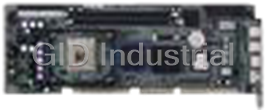
Advantech 1906618403 CPU Board. VGA/LAN/HISA-(FSB 533) rev A2 Processor System CPU Intel Pentium 4, ...
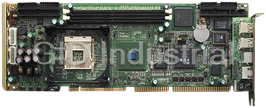
Advantech 1906618608 CPU Boards. Socket 478 | Pentium 4/Celeron Processor | VGA/Dual Gigabit LAN | H...



 Manufacturers
Manufacturers


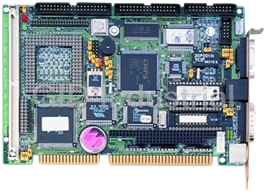
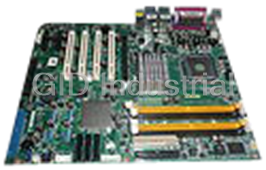
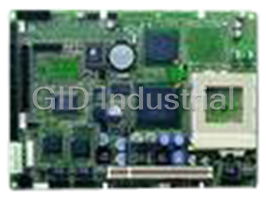
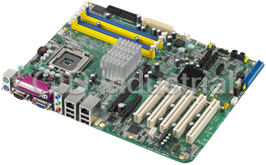




What they say about us
FANTASTIC RESOURCE
One of our top priorities is maintaining our business with precision, and we are constantly looking for affiliates that can help us achieve our goal. With the aid of GID Industrial, our obsolete product management has never been more efficient. They have been a great resource to our company, and have quickly become a go-to supplier on our list!
Bucher Emhart Glass
EXCELLENT SERVICE
With our strict fundamentals and high expectations, we were surprised when we came across GID Industrial and their competitive pricing. When we approached them with our issue, they were incredibly confident in being able to provide us with a seamless solution at the best price for us. GID Industrial quickly understood our needs and provided us with excellent service, as well as fully tested product to ensure what we received would be the right fit for our company.
Fuji
HARD TO FIND A BETTER PROVIDER
Our company provides services to aid in the manufacture of technological products, such as semiconductors and flat panel displays, and often searching for distributors of obsolete product we require can waste time and money. Finding GID Industrial proved to be a great asset to our company, with cost effective solutions and superior knowledge on all of their materials, it’d be hard to find a better provider of obsolete or hard to find products.
Applied Materials
CONSISTENTLY DELIVERS QUALITY SOLUTIONS
Over the years, the equipment used in our company becomes discontinued, but they’re still of great use to us and our customers. Once these products are no longer available through the manufacturer, finding a reliable, quick supplier is a necessity, and luckily for us, GID Industrial has provided the most trustworthy, quality solutions to our obsolete component needs.
Nidec Vamco
TERRIFIC RESOURCE
This company has been a terrific help to us (I work for Trican Well Service) in sourcing the Micron Ram Memory we needed for our Siemens computers. Great service! And great pricing! I know when the product is shipping and when it will arrive, all the way through the ordering process.
Trican Well Service
GO TO SOURCE
When I can't find an obsolete part, I first call GID and they'll come up with my parts every time. Great customer service and follow up as well. Scott emails me from time to time to touch base and see if we're having trouble finding something.....which is often with our 25 yr old equipment.
ConAgra Foods